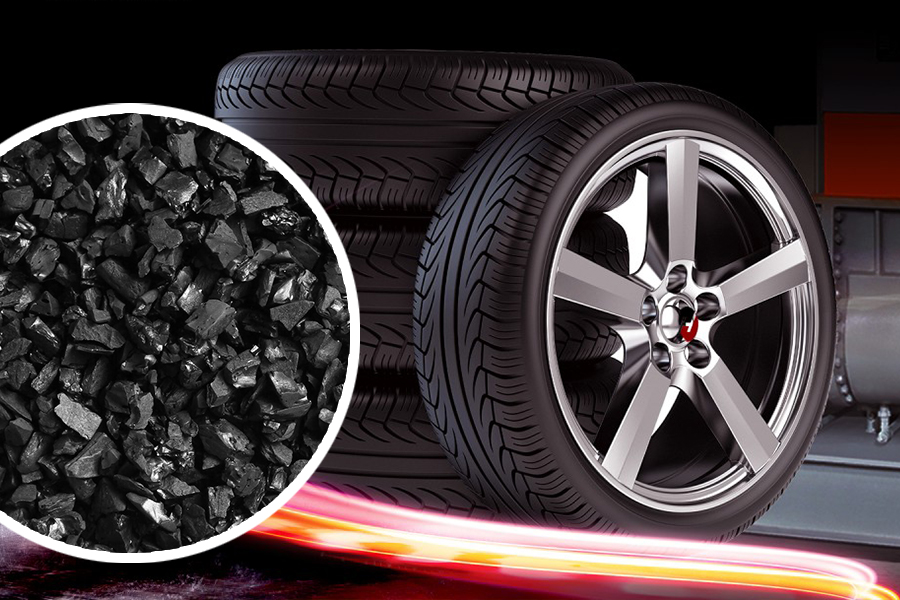India’s net exports of carbon black could spike next fiscal
Carbon black is widely used as a reinforcing agent and colourant in rubber products, mainly in automobile tyres. Amidst the ongoing geopolitical developments, the demand for carbon black is growing sharply across the world. As per a recent CRISIL report, geopolitical developments and resulting realignment of global supply chains, are expected to boost net export volume of Indian carbon black in the upcoming fiscal year.

Carbon Black is basically pure elemental carbon in the form of colloidal particles, that are produced by incomplete combustion or thermal decomposition of gaseous or liquid hydrocarbons under controlled conditions. It looks like a finely divided black pellet or powder. It is mainly used as a reinforcing agent and colourant in rubber products, particularly automotive tyres. As carbon black constitutes up to 20–25% of the weight of tyres, it thus becomes a key component of tyre manufacturing. It also finds application in other industries like paint, plastics, ink, etc.
Worldwide, nearly 90% of carbon black is used in rubber applications, 9% as a pigment, and the remaining 1% is used as a necessary component of numerous different applications.
India’s trade in carbon black
India ranks amongst largest exporters of carbon black in the world. As of Dec 2023, the top 3 exporters of carbon black in terms of shipments are India (85,377), China (67,985) and Germany (58,453). However, when it comes to value, India is ranked 8th in carbon black exports (HS 280300), with exports of US$ 384.2 million in 2023. In the next fiscal year, India is expected to see a further spike in its carbon black net exports. Its top markets are Thailand, Sri Lanka, Vietnam and the US.
According to a recent report by CRISIL, “geopolitical developments and consequent realignment of global supply chains are projected to double the net export volume of Indian carbon black in FY 2024”. The report stated that, driven by the growing export demand, India’s carbon black capacity has increased by nearly 36% over the last two fiscal years to around 2,000 kilo tonnes per annum (ktpa).
The credit risk profiles, as per the report, are expected to remain stable despite the capital expenditure (capex) for capacity addition, since internal accruals will fund most of the capex. This is evident from a CRISIL Ratings analysis of four players who hold almost 75% of India’s domestic capacity.
Geopolitical developments and impact thereof on Indian carbon black
European Union (EU) is the largest importer of carbon black, globally. Previously, China and Russia were the major suppliers, supplying a significant portion of the demand for carbon black. Of the 1,000 kilo tonnes of carbon black that Russia exported in FY 2023, the European Union accounted for approximately 70% of the total shipments.
On 25th February, 2023, EU under its 10th package of sanction against Russia imposed import quota of about 752 kilo tonnes upto July 1, 2024 and complete import restrictions thereafter.
The other major exporter is China. It mainly uses carbon black oil (CBO), a derivative of coal tar as a key component in the production of carbon black. Production of carbon black in China has been affected by environmental concerns as well as high input costs.
These developments have enhanced the competitiveness of India’s carbon black. For producing carbon black, the Indian companies use carbon black feed stock (CBFS), which comes from crude oil.
According to Mohit Makhija, Senior Director, CRISIL Ratings “The ongoing Russia-Ukraine conflict has resulted in a complete ban on carbon black imports by EU from Russia, which will be effective from July 01, 2024. Indian carbon black producers, after the recently completed capacity additions, are well placed to address the resultant supply challenges for the EU. The added capacities will help in boosting India’s net exports of carbon back to ~190 kilo tonnes next fiscal from ~94 kilo tonnes in fiscal 2023.”
The growing carbon black exports from India would not be at the expense of meeting domestic demand, the report added. The domestic tyre industry is predicted to grow at a consistent rate of 6-8% during the current and next fiscal year, backed by replacement and original equipment manufacturer (OEM) demand.
Prateek Kasera, Team Leader, CRISIL Ratings anticipates, “Indian carbon black players will witness double-digit volume growth this fiscal and the next as the enhanced capacities kick in. Revenue is expected to grow ~15% next fiscal after remaining flat this fiscal, as realisations were impacted by crude oil prices. Despite the low realisations, operating profitability is expected to inch up marginally by around 100 basis points to 13.5-14.0% this fiscal and the next, supported by healthy bargaining power of suppliers on account of the criticality of carbon black in end products as well as the limited number of producers.”
Notwithstanding the capital expenditure, the balance sheets of carbon black manufacturers are expected to remain sound. For the current and upcoming fiscal year, it is anticipated that debt to earnings before interest, tax, depreciation, and amortisation (EBITDA) ratio will continue to be robust at 1.2–1.4 times. That is a slight decline from about 1.0 times during the previous fiscal year. As per the report, the gearing will continue to remain comfortably below 0.5 time for the current and next fiscal year. Having said that, it will be important to monitor the evolving geopolitical landscape and its impact on crude oil prices.












Leave a comment